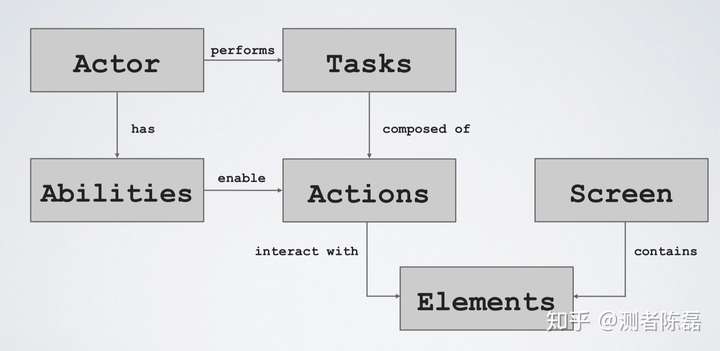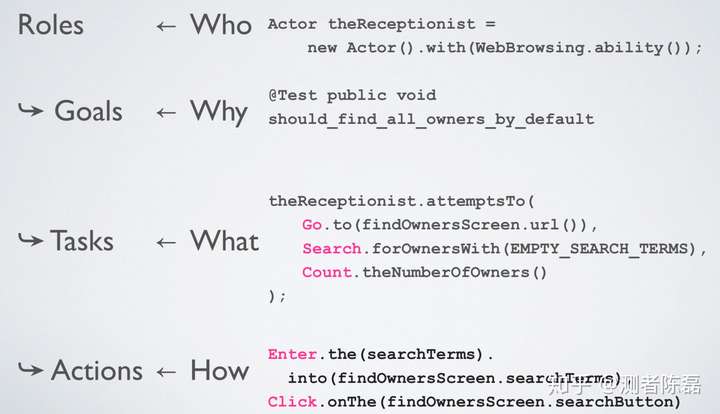
Screenplay模式
![]()
Junit的Screenplay
![]()
举例
Actor theReceptionist =newActor().with(WebBrowsing.ability())theReceptionist.attemptsTo(Go.to(findOwnersScreen.url()),Search.forOwnersWith(EMPTY_SEARCH_TERMS),Count.theNumberOfOwners());assertThat(theReceptionist.sawThatThe(numberOfOwners()),was(TheExpectedNumberOfOwners));
privatestaticString searchTerms;@Overridepublicvoid performAs(Actor asAReceptionist){asAReceptionist.attemptTo(Enter.the(searchTerms).into(findOwnersScreen.searchTerms),Click.onThe(findOwnersScreen.searchButton));}publicSearchForOwnersWith(String searchTerms){this.searchTerms = searchTerms;}
@Url("owner/find.html")publicclassFindOwnerScreenextendsWebScreen{@LocateBy(css="#search-owner-form input")publicScreenElement searchTerms;@LocateBy(css="##search-owner-form button")publicSearchElement searchButton;
publicclassEnterextendsWebDriverInteractionimplementsPerform{privateString text;privateScreenElement field;publicvoid performAs(Actor actor){web(actor).findElement(field.locator()).sendKeys(text);}publicEnter(String text){this.text = text;}publicstaticEnter the(String text){returnnewEnter(text);}publicPerforminto(ScreenElement field){this.field = field;returnthis;}}
优越性
相比于PO模式
- screen的类更小
- 更精简更聚焦的Task类
- 可读性更高
- 继承关系简单
posted on
2018-12-11 14:17
测者陈磊
阅读(
309)
评论()
收藏
举报






 浙公网安备 33010602011771号
浙公网安备 33010602011771号